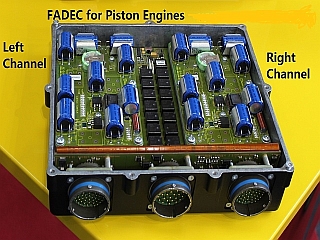Related Research Articles
In information theory, data compression, source coding, or bit-rate reduction is the process of encoding information using fewer bits than the original representation. Any particular compression is either lossy or lossless. Lossless compression reduces bits by identifying and eliminating statistical redundancy. No information is lost in lossless compression. Lossy compression reduces bits by removing unnecessary or less important information. Typically, a device that performs data compression is referred to as an encoder, and one that performs the reversal of the process (decompression) as a decoder.

In cryptography, encryption is the process of encoding information. This process converts the original representation of the information, known as plaintext, into an alternative form known as ciphertext. Ideally, only authorized parties can decipher a ciphertext back to plaintext and access the original information. Encryption does not itself prevent interference but denies the intelligible content to a would-be interceptor.

A digital elevation model (DEM) or digital surface model (DSM) is a 3D computer graphics representation of elevation data to represent terrain or overlaying objects, commonly of a planet, moon, or asteroid. A "global DEM" refers to a discrete global grid. DEMs are used often in geographic information systems (GIS), and are the most common basis for digitally produced relief maps. A digital terrain model (DTM) represents specifically the ground surface while DEM and DSM may represent tree top canopy or building roofs.

In fluid dynamics, angle of attack is the angle between a reference line on a body and the vector representing the relative motion between the body and the fluid through which it is moving. Angle of attack is the angle between the body's reference line and the oncoming flow. This article focuses on the most common application, the angle of attack of a wing or airfoil moving through air.
An accelerometer is a tool that measures proper acceleration. Proper acceleration is the acceleration of a body in its own instantaneous rest frame; this is different from coordinate acceleration, which is acceleration in a fixed coordinate system. For example, an accelerometer at rest on the surface of the Earth will measure an acceleration due to Earth's gravity, straight upwards of g ≈ 9.81 m/s2. By contrast, accelerometers in free fall will measure zero.

A full authority digital engine (or electronics) control (FADEC) is a system consisting of a digital computer, called an "electronic engine controller" (EEC) or "engine control unit" (ECU), and its related accessories that control all aspects of aircraft engine performance. FADECs have been produced for both piston engines and jet engines.

Regina International Airport is an international airport located in Regina, Saskatchewan, Canada, located 2 nautical miles south-west and 7 km (4.3 mi) west-southwest of the city centre. It is run by the Regina Airport Authority. In 2018, it was the 15th busiest airport in Canada.

Satellite geodesy is geodesy by means of artificial satellites—the measurement of the form and dimensions of Earth, the location of objects on its surface and the figure of the Earth's gravity field by means of artificial satellite techniques. It belongs to the broader field of space geodesy. Traditional astronomical geodesy is not commonly considered a part of satellite geodesy, although there is considerable overlap between the techniques.

Lester B. Pearson International Airport, commonly known as Toronto Pearson International Airport, is an international airport located in Mississauga, Ontario, Canada. It is the main airport serving Toronto, its metropolitan area, and the surrounding region known as the Golden Horseshoe. The airport is named in honour of Lester B. Pearson, who served as the 14th Prime minister of Canada and received the Nobel Peace Prize in 1957.
Encryption software is software that uses cryptography to prevent unauthorized access to digital information. Cryptography is used to protect digital information on computers as well as the digital information that is sent to other computers over the Internet.

Virtual cinematography is the set of cinematographic techniques performed in a computer graphics environment. It includes a wide variety of subjects like photographing real objects, often with stereo or multi-camera setup, for the purpose of recreating them as three-dimensional objects and algorithms for the automated creation of real and simulated camera angles. Virtual cinematography can be used to shoot scenes from otherwise impossible camera angles, create the photography of animated films, and manipulate the appearance of computer-generated effects.
In marketing, geomarketing is a discipline that uses geolocation in the process of planning and implementation of marketing activities. It can be used in any aspect of the marketing mix — the product, price, promotion, or place. Market segments can also correlate with location, and this can be useful in targeted marketing.

Sound Transit Express is a network of regional express buses, operated by the multi-county transit agency, Sound Transit. The routes connect major regional hubs throughout 53 cities in three counties in the Puget Sound region. Sound Transit Express ranks first in the nation in the number of commuter bus passengers carried and in vehicle miles driven. The first nine routes and 114 buses began carrying passengers on September 19, 1999. In 2022, the system had a ridership of 6,905,300, or about 23,400 per weekday as of the fourth quarter of 2022.
Data loss prevention (DLP) software detects potential data breaches/data ex-filtration transmissions and prevents them by monitoring, detecting and blocking sensitive data while in use, in motion, and at rest.

Junos OS is a FreeBSD-based network operating system used in Juniper Networks routing, switching and security devices.
Middleware analysts are computer software engineers with a specialization in products that connect two different computer systems together. These products can be open-source or proprietary. As the term implies, the software, tools, and technologies used by Middleware analysts sit "in-the-middle", between two or more systems; the purpose being to enable two systems to communicate and share information.

In transportation infrastructure, a bidirectional traffic system divides travellers into two streams of traffic that flow in opposite directions.

Data at rest in information technology means data that is housed physically on computer data storage in any digital form. Data at rest includes both structured and unstructured data. This type of data is subject to threats from hackers and other malicious threats to gain access to the data digitally or physical theft of the data storage media. To prevent this data from being accessed, modified or stolen, organizations will often employ security protection measures such as password protection, data encryption, or a combination of both. The security options used for this type of data are broadly referred to as data at rest protection (DARP).
An autonomous aircraft is an aircraft which flies under the control of automatic systems and needs no intervention from a human pilot. Most autonomous aircraft are unmanned aerial vehicle or drones. However, autonomous control systems are reaching a point where several air taxis and associated regulatory regimes are being developed.

Airborne Internet is a concept that overlays network theory and principles into the transportation realm. The system goal is to establish information connectivity. To reach that goal, the system must create a scalable, general purpose, multi-application data channel for people in transit.
References
- ↑ "Data in motion and data in transit both used on cloudsecurityalliance.org" (PDF). Archived from the original (PDF) on 2016-04-15. Retrieved 2016-04-18.
- ↑ "Data in Flight | January 2010 | Communications of the ACM".
- ↑ SANS White Paper on Encryption
- ↑ "Data Protection: Data In transit vs. Data At Rest". Digital Guardian. Retrieved 2023-04-12.